The Spanish and Portuguese, followed by the French, were the first seafarers and explorers of new lands. These people are also known worldwide for their ability to make wine. The main cargo in the holds of their ships was food. And barrels of wine, lots of wine. The English and Danes joined the sailors, and their beer and gin joined the wine.
The damp, cold, and storms exhausted and drained the sailors. The water they carried was taken from rivers where animal carcasses and fish had rotted and died. Wine, unlike water, had no bacteria. Wine kept them warm, satisfied their hunger, and healed their wounds. The wine was a balm for body and soul. It prolonged life.
As the colonists began to conquer and develop the lands of the New World, they encountered a problem: in the warm tropical waters, the wine and beer they brought went sour and became undrinkable. Soon there was another problem. And that was pirates. The most coveted prize for pirates was a ship with alcohol in the hold. This booty had to be shared immediately and dozens of greedy eyes and parched throats watched jealously. Bloody fights were a common thing. Strong drink was highly prized and a pint of stolen gin could easily lead to a bullet in the head or a pirate’s saber in the stomach. Or to maroon the thief on a deserted island leaving him a musket with a single charge in the barrel.
In the pirate code of one of the most notorious pirates, nicknamed “Black Bart”, the first paragraph regulated the sharing of alcohol:

1. All shall have an equal share in the distribution of provisions and spirits.
2. Any pirate cheating his comrades will be stranded on a desert island.
3. It is forbidden to play cards or dice for money on board.
4. At 8 pm all candles must be extinguished. Those who wish to drink after this hour must do so on the open deck.
The Pirate Code affirmed the equality of all men in the world, regardless of skin color. Adventurers and daredevils of all races and classes became pirates, including officers and gentlemen, and it was they who wrote these codes, some of whose clauses were incorporated into the Constitution by the Founding Fathers of the first republic on American soil.
WHAT IS A FORTIFIED WINE?
During the colonial wars in the New World, England had strong disagreements with Spain and France. The English stopped buying wine from Bordeaux and in 1703 started trading with Portugal. The history of Portuguese Porto wine began during the reign of King Henry of Burgundy. His kingdom included the county of Porto Calais, where he grafted a vine brought from his native Burgundy. The wine was sweet and contained 12-13 percent alcohol. It was thick and tart, but could not withstand transport to the tropics, where it quickly went sour. The English began to add strong brandy to the wine, which they had learned to make in their rainy and cold England. This fortified wine was perfectly preserved in the hot tropics, and the English recipe was soon adopted by French winemakers.
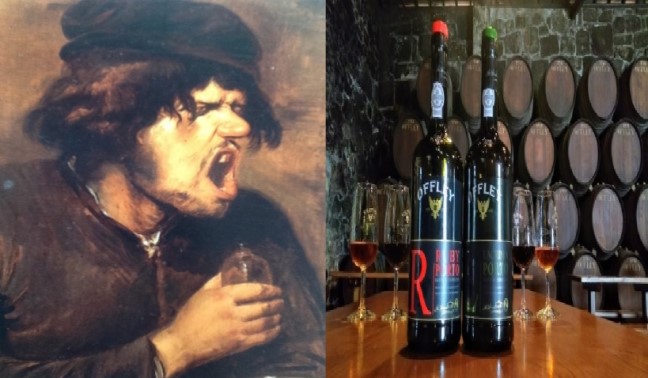
***
INDIAN CHICHA
This alcoholic beverage originates from South America, where it is made from corn. The Maya of the Caribbean were the first to make chicha from fruit. Pirates learned survival skills from them. So they learned to hunt sea turtles, which fishermen harpooned with spears, silently sneaking up on them in their pirogues. There are two species of sea turtles in Caribbean waters. One has a hard shell and cannot be harpooned. These turtles feed on algae in the coastal shallows and their meat has an exquisite flavour. This is why they are called ‘green’ turtles. Other, grey turtles have a soft shell and fishermen have called them ‘leatherback’. Their meat is not very tasty and they eat not only fish but also dead meat.
Among the pirates were buccaneers, excellent marksmen whose skills inspired the Europeans to create a new branch of the army – sharpshooters. One of the amusements of the buccaneers was to shoot fruit from a tree without damaging the fruit itself. They demonstrated the wonders of marksmanship by hunting turtles, their prey being ‘green’ turtles, whose meat later became world famous and is now an exquisite gourmet dish. But back to the wine.
The pirates had a problem with drinking water. Taken from the rivers and lakes water was full of bacteria. It had to be boiled for a long time and then left to stand. This was impossible to do on a pirate ship. Eventually, the sea vagabonds turned their attention to a drink found in every native’s tepee. The natives gathered ripe fruit, crushed it, and poured it into vats of water. Under the hot sun the mixture began to ferment and in a few days the drink called ‘chicha’ was produced. This chicha was particularly strong because of the bananas that were added to the vats along with the peel. The peel of the fruit contains wild yeasts that stimulate fermentation, and banana peels are particularly rich in such yeasts. After a week of fermentation, the result was a hoppy drink with the strength of beer. This fermentation killed all the germs and it was safe to drink. The pirates took their invention even further and began adding chopped sugar cane to the fruit. The result was a brew as strong as wine.
Chicha is still widely popular in local Caribbean villages, usually using the simple pirate method of putting chopped fruit in a bucket, pouring water over it, adding sugar, and leaving it to steep for a couple of weeks. This drink gets you drunk quickly but might have the side effect of staining your trousers if no toilet is close.
The natives of the New World gave the Europeans tobacco and, by teaching them to smoke, shortened the lives of many of them. Not to be outdone, the Europeans presented the natives with strong liquors, making many of them alcoholics. It was probably the funniest trade in human history.
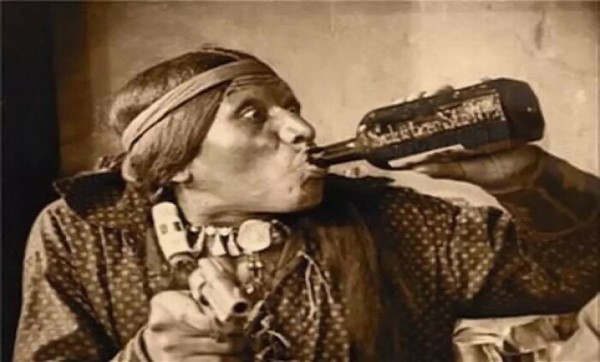
CARIBBEAN RUM WAS INVENTED BY EUROPEANS.
In the mid-17th century, the first European settlers began to produce strong alcohol from sugar cane molasses using a distillation process. This happened on the island of Barbados and it was the first Caribbean rum. In 1674, Sir Henry Morgan, a privateer for the British Crown and leader of all the buccaneers and pirates in the Caribbean, Governor of Jamaica, began to produce Jamaican rum in commercial quantities. By the time he was appointed Governor, he already had extensive sugar cane plantations. Morgan established sugar exports to England and was the first to distill and export Jamaican rum to America and Europe. True rum is almost black, thick, and rich. It is named after its creator, Sir Henry Morgan. Ginseng tincture was later added, and today Caribbean rum comes in a wide range of colors – from white to black – and a variety of flavors.
Alcohol created its slang among pirates. A desperate drunk was called ‘sucky’, ‘to suck one’s face’, and ‘to get drunk as hell’. A bad hangover was ‘cat shit in your mouth’. The strongest remedy was a mixture of rum, beer, gin, and raw eggs. This poison was called ‘Kill the Devil’, and madmen added gunpowder to it, which made the drinker’s eyes pop out of their orbits. It was the favorite drink of a bloodthirsty English pirate called Blackbeard. He had 15 wives and thousands of his great-grandchildren live in the Caribbean. And I am a witness to the fact that the grandchildren and great-grandchildren of the pirates, residents of our fishing village, still drink this cocktail today.
Spanish missionaries visiting Jamaica after peace was restored to the region were concerned about the health of the islanders. After learning about the popular cocktail, the missionaries changed their concern to amazement that the islanders were still alive…
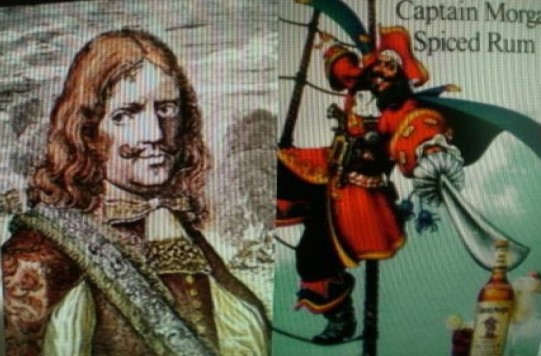
The second most popular was pirate punch, a mixture of strong rum and fruit juice or steeped tea. Punch has the insidious property of affecting the legs more than the head. The drink is ubiquitous in the Caribbean, poured in every bar, and taverns are still known as ‘punch houses’. With the advent of Coca-Cola in the 30s, punch became even more popular. In fact, until recently, Coca-Cola was made from coca leaves, which contain the essential oil of cocaine. To this day, plantation workers chew these leaves throughout the day to give them energy and pep. This kind of punch was a real knockout. However, after the intervention of chemists in the late 60s, Coca-Cola has nothing in common with the original cocaine drink. Nowadays, sugary Coca-Cola is laced with rum so that the carbon dioxide in it delivers the dope to your brain as quickly as possible. And it works because the sugar in Coca-Cola helps the alcohol make your brain dopey in a matter of minutes!
***
WINE FOR PLEASURE!
Why is a Cuban cigar the best cigar in the world? Mother Nature has taken care of it. The warm Gulf Stream carries its waters past the island of Cuba, and the fragrant sea breezes, mixed with the aromas of exotic fruits and the island’s flowering valleys, give the tobacco plantations their very own bouquet.
By analogy with this unique phenomenon, the best vines should grow on a tropical island with fragrant sea breezes. On an island where the soil is rich in volcanic ash, the most important ingredient for the uniqueness of the flavor of the grapes and all the fruits that grow there. There is such an island. It’s Tenerife, one of the Canary Islands!
The best wine comes from places where the family secrets of winemaking have been passed down from generation to generation. Where is the purest wine? Where there are no factories emitting thousands of tons of poisonous smoke into the atmosphere, and where the soil is fertilized with volcanic ash containing natural minerals. These minerals have long been extracted from the soil of the most famous vineyards in France, Italy, and Germany. In the pursuit of profit, hundreds of tons of pesticides are applied to these plantations yearly. The grapes grown there have no flavor or aroma. Winemakers have enlisted the help of chemists who have created flavor additives and concentrates to add to wine that has lost its natural taste and aroma. Every winery has a lab where they experiment on you. Think about it.
The island of Tenerife is home to the Teide volcano. Warm sea breezes wash the island. The winemakers of Europe are left far behind, they do not have the same opportunities as the islanders. The taste of Canary Islands wines is as unique as the aroma of Cuban cigars. The answer is simple: there are healthy soils rich in natural minerals, and sea breezes bring the flavors of the warm ocean to the vines and nourish them with clean rains.
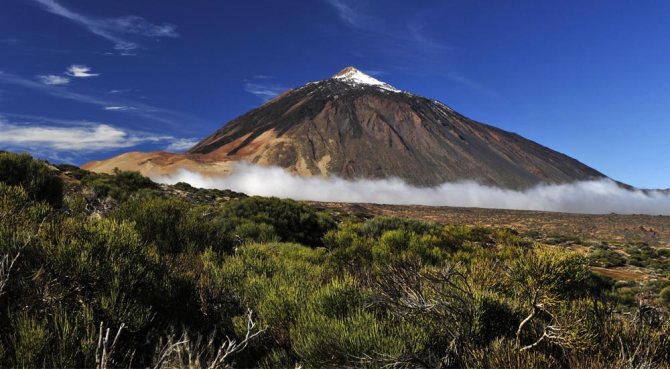
According to the ancient legend of the island’s aborigines, the Devil kidnapped the Sun God and imprisoned him in the crater of the Teide volcano. Night then fell over the land. Achaman, the native god, confronted the Devil, defeated him, and imprisoned him in the depths of the volcano.
The first documented eruption of the Teide volcano dates back to 1492, witnessed by Christopher Columbus during his first expedition to the New World.
Later, statistics revealed a pattern of Teide volcanic eruptions occurring about once every 100 years. The last eruption was in 1909, 115 years ago. In 2003, seismologists recorded an increase in activity in the volcano’s crater. This indicates that magma is rising in the crater. The positive side of Teide’s renewed activity is that the devil of legend was probably cooked in the rising magma.
HOW TO CHOOSE A WINE.
1) The wine should be bought directly from the producer, avoiding the intermediary, i.e. the distribution network, the supermarket. It is these intermediaries who push winemakers to add sulfites to the wine so that the wine berry does not play in the bottles and the wine does not appear as sediment.
2) The wine should be bought from the cask, after having assessed its transparency, aroma, and taste. Sulfites are not added to the wine in the barrel but in the bottling procedure. In the bottle, the wine is already sulfurized and the bottle is sealed. That is why you buy such wine at random, guessing about it according to the picture on the label.
3) The most delicious wine – from 6 months to a year. Wine younger than 6 months has not yet gained flavor. And after a year, the wine in the bottle is already slightly darker. This is oxidation, the result of the wine’s interaction with oxygen. In such a wine, the original aroma and flavor of the berries disappear.
4) If you are buying wine from a producer, ask for some of the grapes from which the wine is made (they always have a stock in their freezers). Compare the taste of the grape with the taste of the wine, it should be the same. This will tell you if the wine has been enriched with flavor extracts.
5) You can use a plastic container to transport the wine you have bought, but when you get home, pour the wine into bottles. Pour the wine carefully, using a plastic tube, it is very important not to pour the wine into the bottle with a jet. This will “oxygenate” the wine, causing it to oxidize and darken. The wine should flow down the sides of the bottle without any air bubbles. Fill the bottle under the cork without leaving any air inside, the best bottles for this are those with a screw top.
6) Store your wine in a dark, cool place. Sulfite-free wine is sensitive to sunlight and temperature changes. After all, the grape berry is still alive in it and will add flavor and aroma to your drink with each passing day.
7) Do not shake the bottle before serving as there may be a slight sediment. Pour the wine into a wide-necked carafe. The oxygen will bring out all the aromas and flavors, the wine will “wake up” and play. Leave to breathe for 10-15 minutes and then treat yourself and your friends. Do not chill the wine too much in the fridge, otherwise you will not feel the charm of its bouquet.
Your guests will enjoy this wine so much that they will not want to go to the wine section of the supermarket.
The small village of Icod de Los Vinos is located near the volcano, between Garachico and Puerto de La Cruz. You should go there!
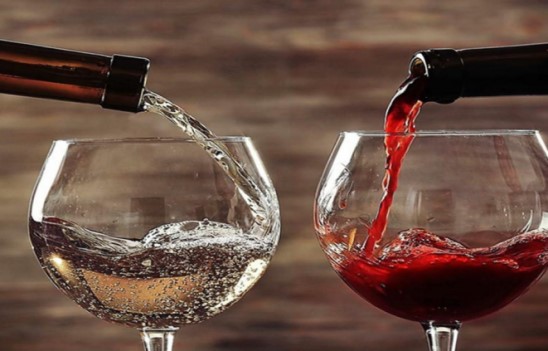
© Copyright: Walter Maria, 2022 Certificate of publication #222081901277

Be First to Comment